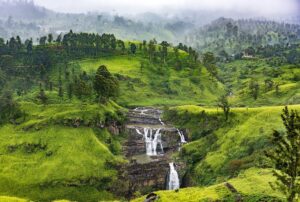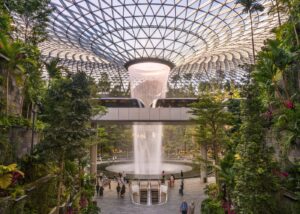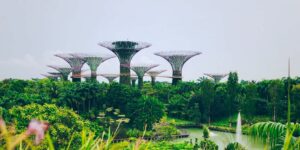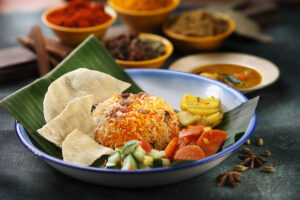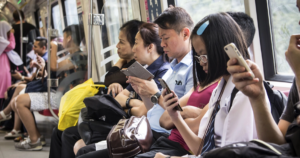Multicultural Singapore has four official languages – Malay, Chinese, Tamil and English. In the 5-million country, many ethnic groups have mixed, bringing their original traditions and religious beliefs to the island – Christianity, Buddhism and Taoism, Islam, African and Malay cults. Thus, the ethnic quarters of Singapore appeared, each of them with its own flavor.
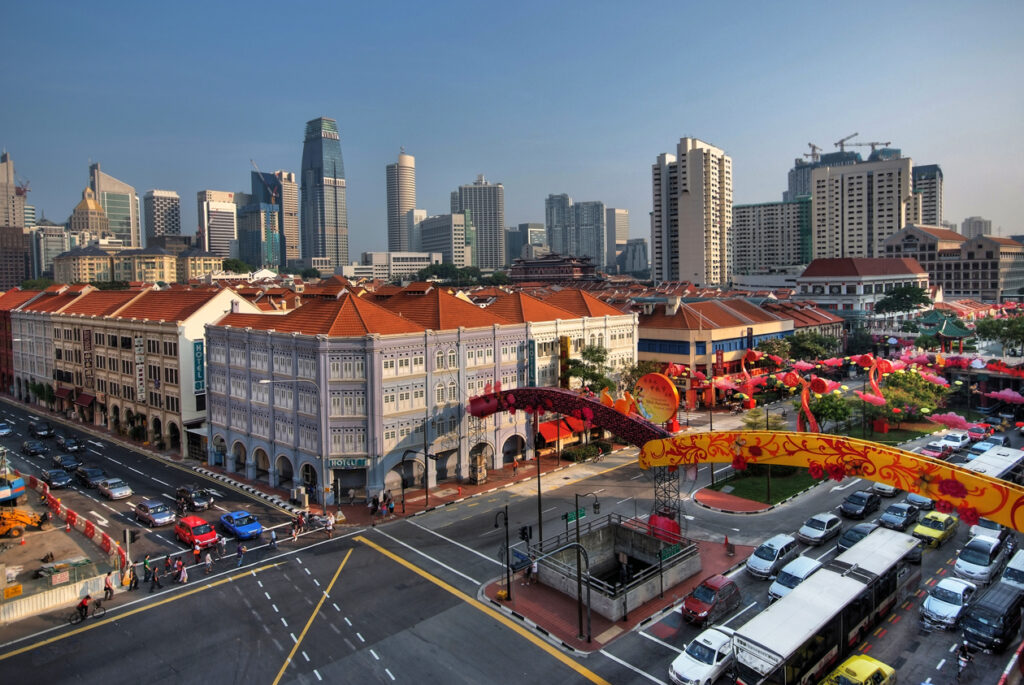
Singapore neighborhoods are interesting sites to explore, as you can get acquainted with the cultural diversity of the metropolis.
Many architectural structures here are included in the lists of protected historical monuments of the country. Plus, visiting these neighborhoods is a great opportunity to taste authentic Singaporean cuisine.
Check this ultimate travel guide on must-visit Singapore neighborhoods and get more details about ethnic quarters you can visit.
Chinatown
Chinatown is one of Singapore’s most popular neighborhoods. The turrets of the minarets of the ancient Muslim Mosque Jama (Masjid Jamae), belonging to the Tamil community, stand side by side with the Chinese temple, built in 2008 and decorated with pagodas. Its architectural appearance dates back to the medieval structures of the Tang Dynasty.

The Sri Mariamman Temple, built in the center of Chinatown, is impressive. A six-tiered conical tower rises above the entrance; its facades are full of brightly painted sculptures of numerous gods.
There are many more heavenly patrons in Hinduism than there are days in a year, so there are always endless holidays dedicated to one of them. You may be lucky enough to see a sumptuous wedding ceremony here, accompanied by the dancing of Indian beauties and the chanting of monks.
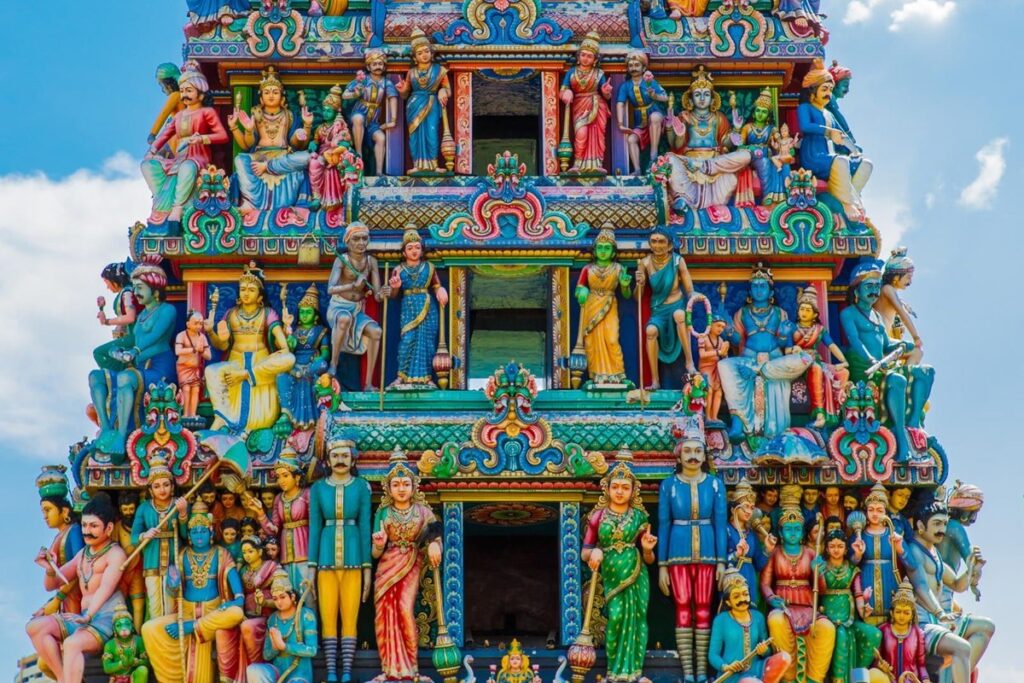
The first floors of the neat little houses of Chinatown are filled with shops selling inexpensive goods. Sellers are invariably smiling and friendly, willingly reduce the price.
Deeper into the labyrinths of the quarter, you will find entire streets crowded with Chinese restaurants. It is convenient to get here by metro, the station is called Chinatown.
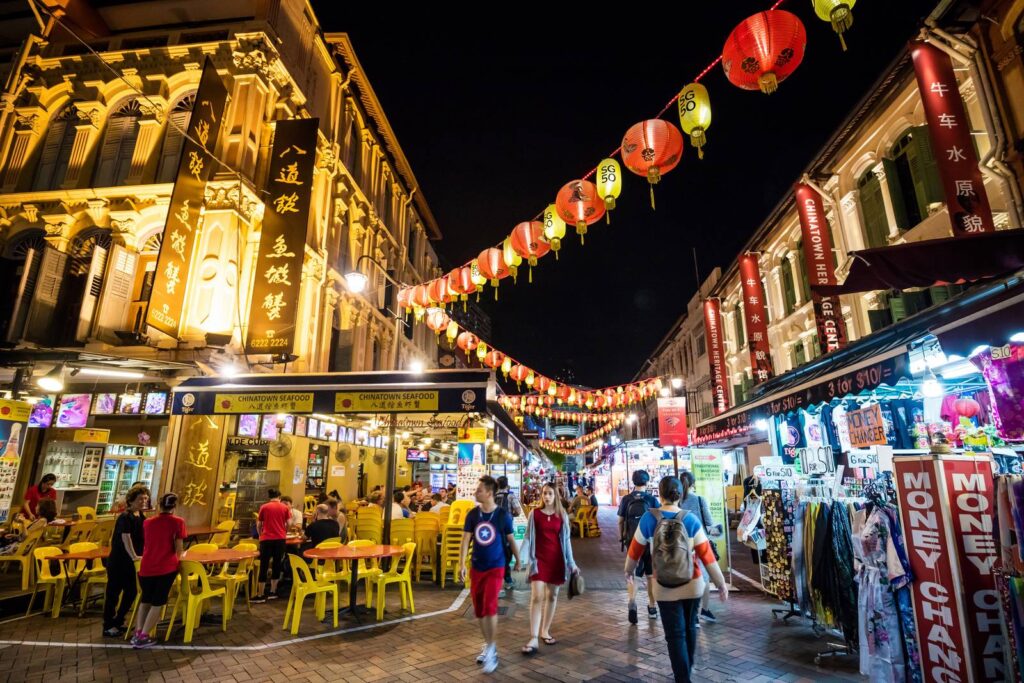
Kampong Glam (Muslim Quarter)
In a dense environment of skyscrapers, the low-rise buildings on Arab street in Singapore, firstly constructed in the nineteenth century on the site of a village of Malay fishermen, have been preserved.
This Singapore ethnic quarter is called Kampong Glam, where Kampong means village and Gelam is a type of eucalyptus tree that grows in the area. Visit to mosques, museums and other attractions here smoothly turns into gambling shopping.
On the main Arab street there are shops selling beautiful carpets, metal jugs decorated with embossing, painted ceramics, amazing fabrics, clothes, shoes, bright accessories, and souvenirs. There are especially many jewelry stores here; stylish jewelry sparkles in the windows.
A selection of branded goods is offered in Sultan Plaza shopping center, and the huge Golden Mile shopping center which is located to the east of the Muslim Quarter.
The decoration of this Singapore neighborhood is Masjid Sultan Mosque. Do not deny yourself the pleasure of strolling along the most picturesque street not only of this ethnic quarter, but of Singapore – Bussorah.
Palm trees, architecture, a tiled pedestrian area – all this awaits you there. And on Kandahar Street you can see a huge number of restored shops.
All Singapore neighborhoods are ready to conquer with their cuisine, and the Arab quarter is no exception. In cafes and restaurants you can find mostly dishes from the Middle East, you can easily find restaurants serving traditional Turkish, Egyptian or Lebanese cuisine.
Alcohol cannot be found in many places, which is worth remembering. Instead, you can order a shisha after a hearty and delicious dinner.

Little India
The Indian quarter is called Little India. Here you will plunge into the world of bright colors, intoxicating smells of spices and hits of Indian pop music sounding everywhere. As a souvenir, you can choose an elegant sari or a turban with a glass “emerald”.
There are also solid jewelry galleries in the back streets of Little India, where genuine Indian gems sparkle. If you want to purchase jewelry, ask for certificates and receipts, you’ll need them at the customs at the Singapore airport.
Also, its better to know how to behave, what is allowed and what is prohibited in Singapore in order to avoid any problems.
Little India is a miniature and clean version of India, with many beautiful temples. The oldest one is Sri Veeramakaliamman temple. It was built back in 1881 by a prisoner from India. And the most visited Hindu temple in Singapore is Temple of 1000 Lights or Sakya Muni Buddha Gaya. In this temple there is a statue of Buddha, which is 15 meters high.
After visiting all the temples, be sure to enjoy traditional dishes. If you want to search for something special, typical Indian, then you just need to look into the Tekka market.
Here you will find fresh produce and an abundance of traditional street food. The next destination for shopping lovers will be Mustafa Center. More than 300,000 products for every taste, budget, in accordance with your needs. Want to know more about the life of Indian immigrants in Singapore? Then be sure to check out the Heritage Center.
If you are lucky enough to visit Singapore in October or November, then be sure to visit the Deepavali festival of the victory of good over evil.
Little India Singapore Walkthrough Video
Geylang Serai Malay District
Geylang Serai is a traditional Malay area that will allow you to see how people lived in the middle of the last century. Getting to Geylang Serai is easy: this neighborhood is located in the heart of East Singapore.
The area is especially attractive for tourists because it has hardly been reconstructed and has managed to preserve its identity and authenticity in rapidly developing Singapore.
Here you can experience traditional Malaysian arts and crafts such as batik painting, kite making and kampong games.

You can find entertainment in Malay area both day and night. There are many restaurants, traditional street food eateries, shopping malls and small craft shops, as well as an officially licensed red-light district.
The quarter was founded in the middle of the nineteenth century. Initially, the indigenous Malays and sea gypsies lived there. The development of this residential suburb was promoted by Britain when it evacuated one of the floating villages here from Malaysia.
A visit to Geylang Serai is a unique opportunity to immerse yourself in the culture of Malaysia without leaving Singapore. Be sure to visit Malay Heritage Centre. There you will find ancient Malaysian weapons, wedding dresses, musical instruments and other attributes of Malaysian life in the middle of the last century.
Another interesting place is the Geylang Serai market with a forty-year history. If you are looking to go shopping in Singapore, this place is one of the best in the country. Here you can buy clothes, furniture, antiques, carpets, fabrics, souvenirs and more. Also in the market you can try national street food and buy goods for Muslims.
The recently renovated shopping arcade has become much cleaner and more reminiscent of a shopping center than the traditional Asian market.
How to get there
Take the subway to Paya Lebar Station (EW8) and head east for a couple of blocks.


